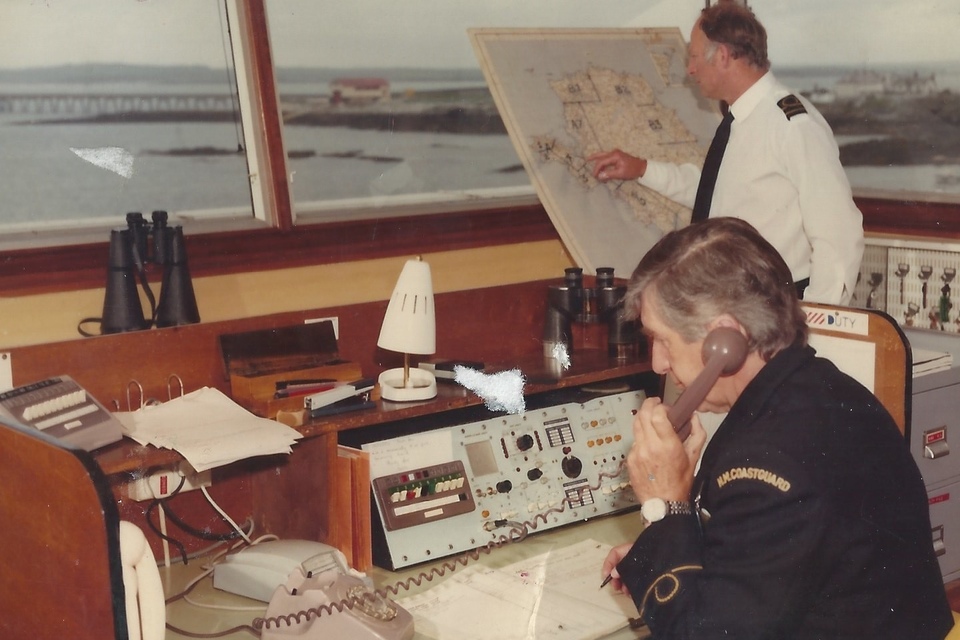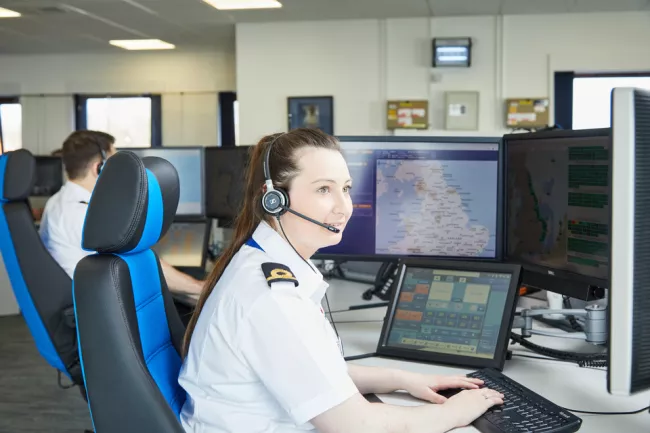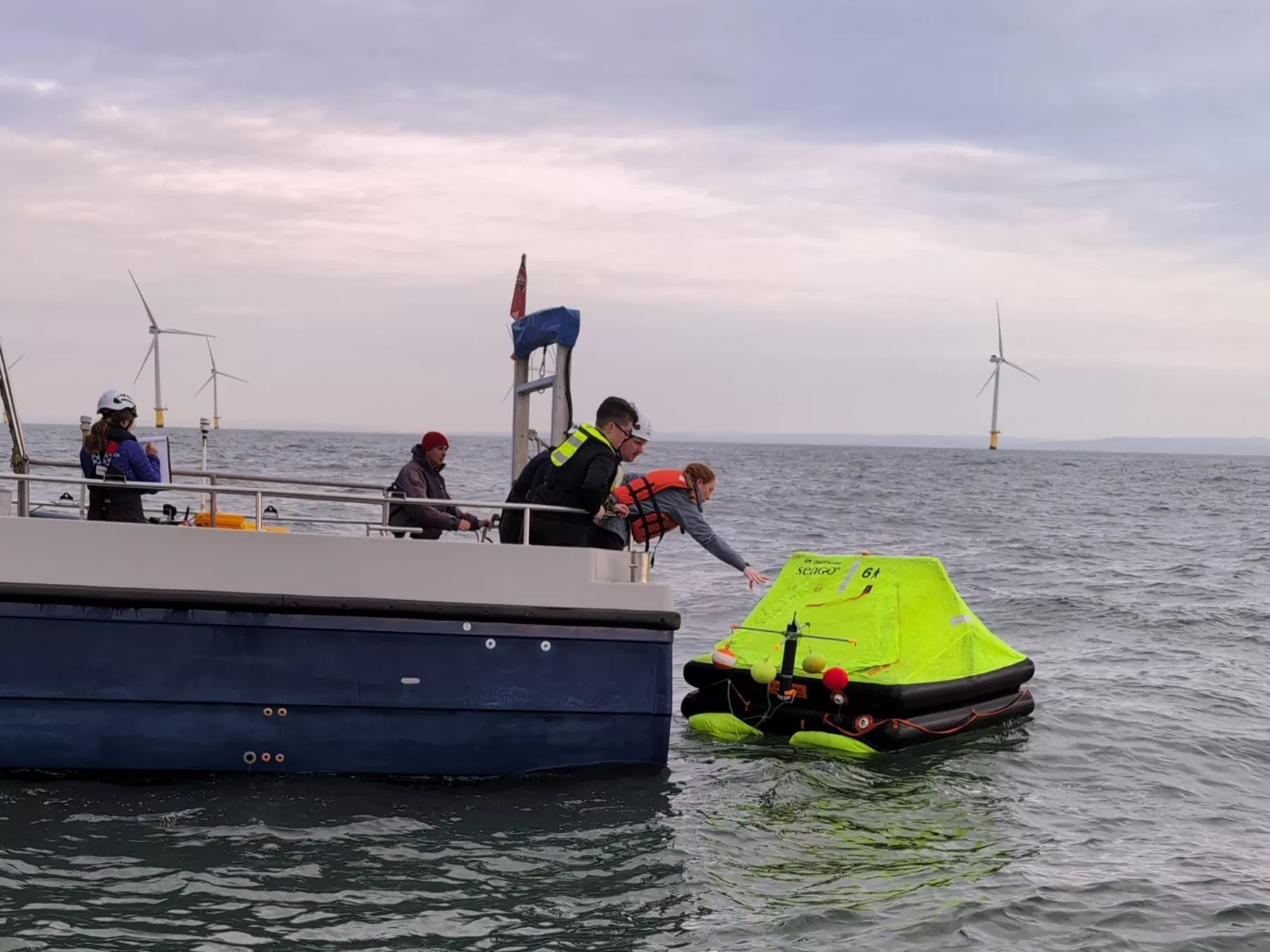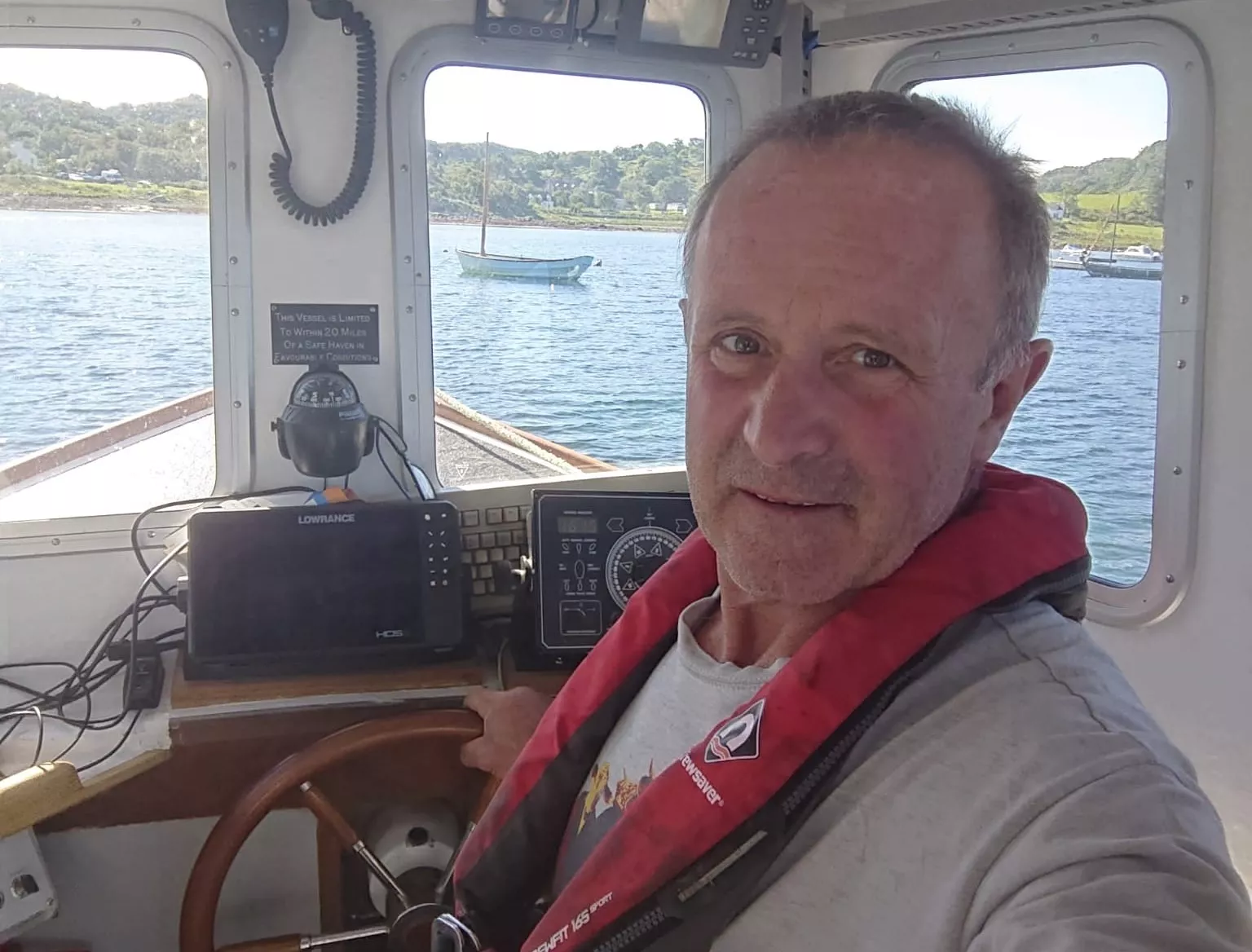The highly skilled teams in the operations centres use a full ‘technology toolkit’ to help co-ordinate search and rescues. From an operations room 'nerve centre', technology allows teams to plan, share information and work closely with the thousands of incredible volunteers, coastal officers and fellow emergency services partners across the UK.
Live incident command system
Alerts may be received by phone, VHF radio and other alerting systems such as Personal Locator Beacons (PLB) but the rapid response is the same. The operator inputs all the available information into a live incident command system, every report is logged and automatically numbered and this information can be seen by all authorised users, anywhere.
The system lets the operator zone into area maps and the location of ‘assets’ such as coastguard rescue teams, blue light partners and others such as the RNLI and independent lifeboats. From here, they can ‘drag and drop’ the buttons for the assets into the incident to ask them to attend, which HM Coastguard calls ‘tasking’. The alerting and tasking system also sends a text to our incredible teams of volunteers.
A touchpad communications system is nearby and the operators can use this to call and speak to emergency services responders and other control rooms including Police, Fire and Rescue and the Ambulance service.
Search planning
An important tool is a search planning system for those in difficulty in the water. The exact last known location of the casualty can be input and and the live data takes into account the tides, wind speed and even the wave height in that area.
It helps forecast how far the person or people may have moved over periods of time so those sent to search the area such as a rescue team searching the coastline, a lifeboat or helicopter can be sent to the most likely location.
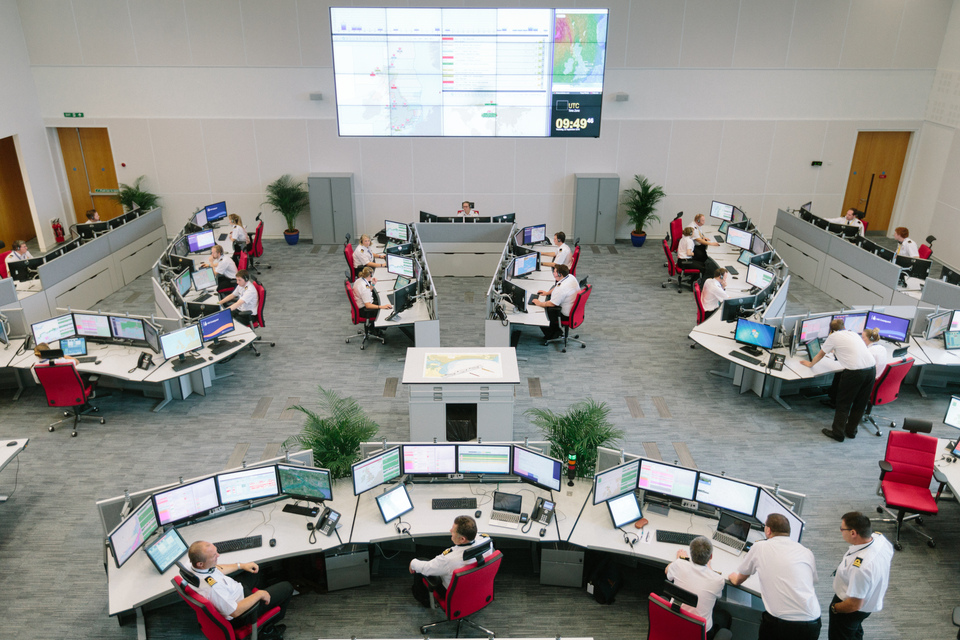
What 'tech toolkit' is right for you?
Help us to help you.
Knowing where you are and being able to provide your location if you ever need to call for help really does help us to help you. Find out what tech should be in your ‘toolbox’.
Mobile phones
Most of us now have mobile phones. Putting them in a waterproof case if you’re out on the coast, is a great idea as you’ll still be able to call 999 and ask for the Coastguard to help if you find yourself unexpectedly in the water.
Apps
We live in the ‘age of the app’ and many smartphones now have GPS in them (Global Positioning System which pinpoints geographical locations) and other apps are really useful such as Google maps, Ordnance Survey maps and other widely available location apps. There are also lots of free weather and tide times apps so you can check the predicted conditions before you set out.
SafeTRX
The RYA’s (Royal Yachting Association) free SafeTrx app is also useful, not just for sailors but anyone using the coast – whether you’re an angler, a paddleboarder or a walker. You can add in your emergency contact details. And if you get into trouble and call for help, your location is automatically updated in the app and available to the rescue services.
PLB (Personal Locator Beacon)
Especially good for anyone who loves the great outdoors. Increasingly affordable, they can be used all over the world and in remote locations. If you get into difficulty, you can set it off and the nearest emergency services will be alerted.
VHF Radio with digital selective calling
Very useful for all water users and extra back up in the event of no mobile phone signal or limited battery life.
EPIRB, emergency positioning-indicating radio beacon
An essential piece of kit for vessels. You need to register it to your vessel and when activated, it will transmit the location and if it has GPS capability, it will broadcast an accurate position of the vessel.
In an emergency, call 999 and ask for the Coastguard.
Listen to our podcast
Listen to some of Her Majesty's Coastguard's technical gurus giving their top tips on staying safe at the coast.
